Cherry Blossoms 2013: Gunma Report (3/28)
| Cherry Blossom Report 2013 Official cherry blossom reports by japan-guide.com |
| previous post |
| next post |
2013/03/28 - Gunma Report
by scott
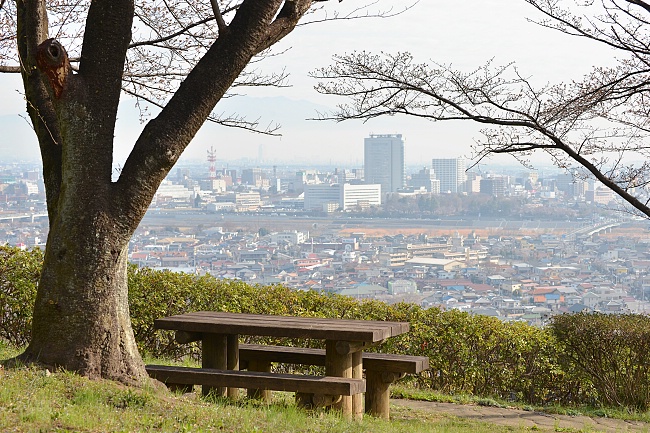
This year's greatly accelerated cherry blossom season around Tokyo has been playing havoc with people's carefully made travel plans. The blossoms around the city are at full bloom as I write this report, so chances are good that you could miss the season entirely if you had made your plans according to the early blooming predictions.
But there are several alternatives for those arriving too late to see the cherry blossoms around Tokyo, such as taking a daytrip to one of the neighboring areas that has a later blooming season. One such area is Gunma Prefecture, where the trees typically bloom a week after those in the capital. Today I paid a visit to the prefecture's two main cities, Takasaki and Maebashi, where the blossoms are currently opening.
Takasaki lies on the Joetsu Shinkansen from Tokyo. Frequent trains make the trip which takes about an hour and costs 4290 yen by unreserved seat. Alternatively it takes about 100 minutes and costs 1890 yen by local trains departing from Tokyo's Ueno Station. Maebashi is located just an additional 15 minute local train ride by the JR Ryomo Line northeast of Takasaki. All above mentioned trains are covered by the Japan Rail Pass, JR East Pass and JR Kanto Area Pass.
Takasaki Kannonyama Park
March 28, 2013 - opening (10-50%)
One of Takasaki City's popular sightseeing spots is Takasaki Kannonyama Park, a large, forested park in the mountains to the west of the city center. The main attraction of the park and a symbol of Takasaki is a 42 meter high statue of Kannon, the Buddhist goddess of mercy, which overlooks the city from the top of the mountain. Visitors can enter the statue (9:00-17:00, 300 yen) and climb up to an observation deck inside the statue's chest.
Takasaki Kannonyama Park contains nearly 3000 cherry trees which can be found scattered around the statue, as well as around the temples, shops, restaurants, roads and trails that populate the park. The cherry blossoms around the statue first opened a few days ago, and were about 20% open when I visited this morning. At this rate I would expect them to reach full bloom around Tuesday or Wednesday of next week.
Takasaki Kannonyama Park can be reached by Gururin Buses which depart from the west exit of Takasaki Station every 80 minutes. The one way bus ride to the Kannon statue (Byahui Dai-Kannon) takes about 25 minutes and costs 200 yen.
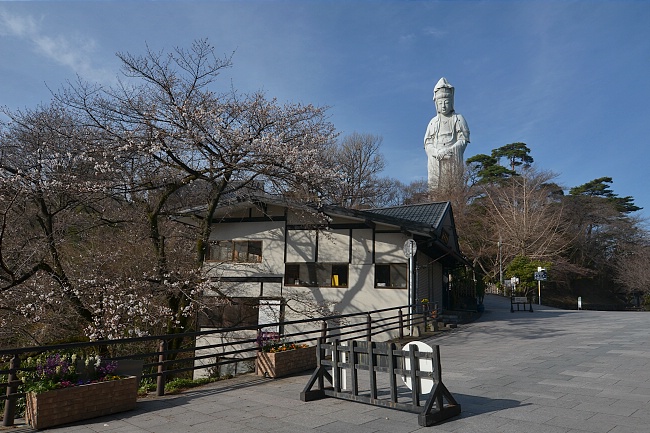
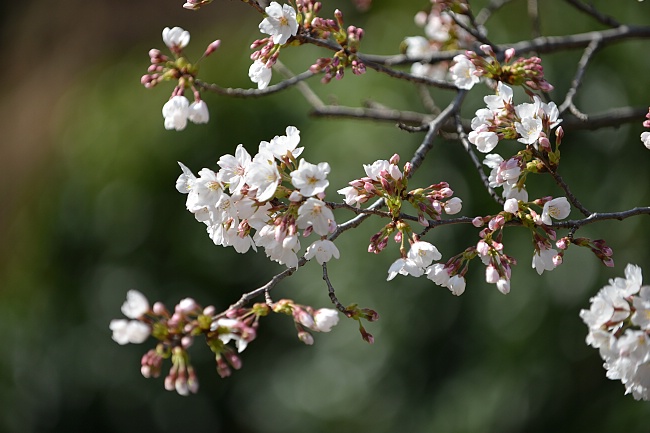
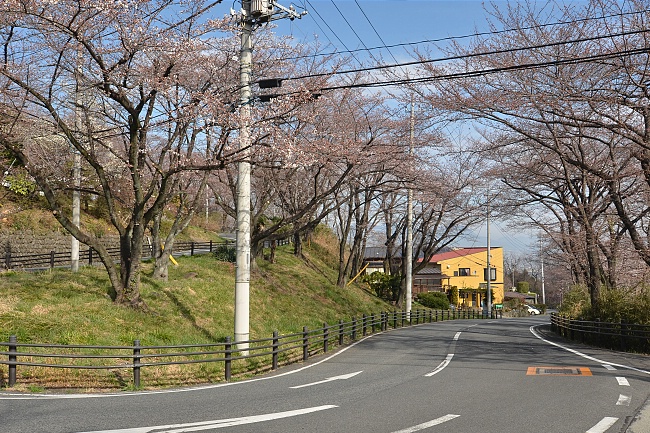
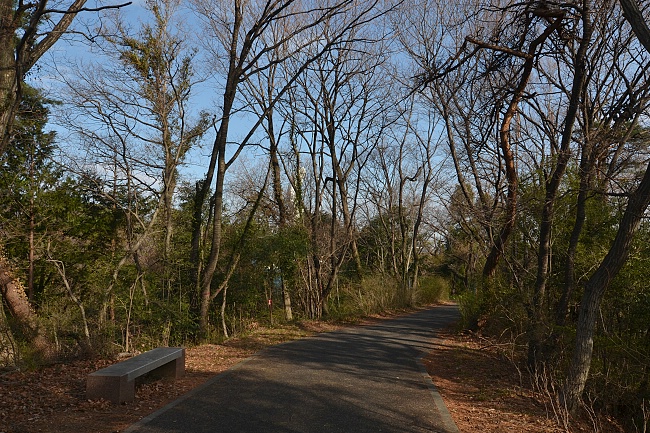
Takasaki Castle Ruins Park
March 28, 2013 - opening (10-50%)
Another popular cherry blossom spot is Takasaki Castle Ruins Park. Located in the center of the city around the Takasaki City Hall, it is very easy to access and only about a 10 minute walk from Takasaki Station. The park is comprised of remnants of the walls and moats that used to be part of a former castle, and has about 300 cherry trees planted along the water. The moats are lit up in the evenings until 22:00.
The blossoms were still opening today and probably won't reach full bloom until early next week. There is also a nice park, simply name Takasaki Park, right next to the castle ruins with a lot of good space for hanami parties. Food stands are set up around Takasaki Park and the park will also be illuminated in the evenings.
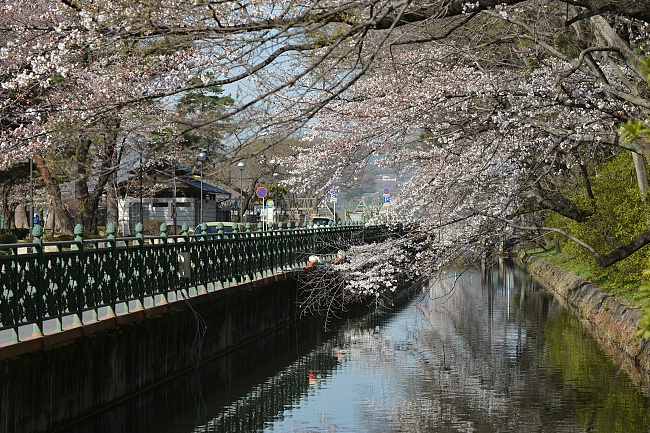
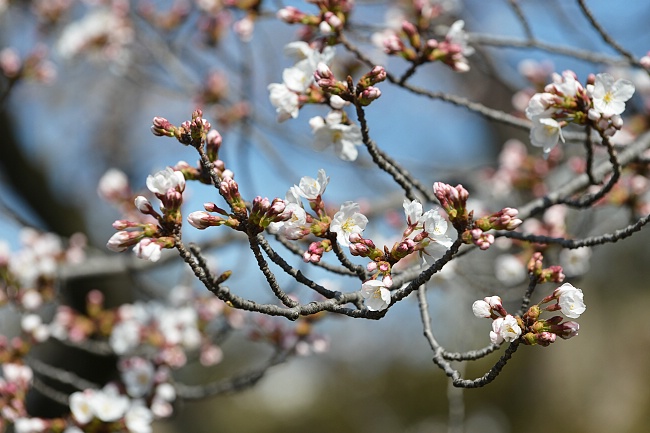
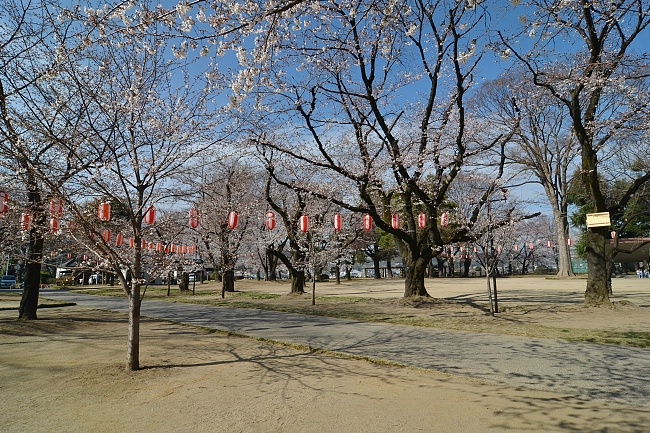
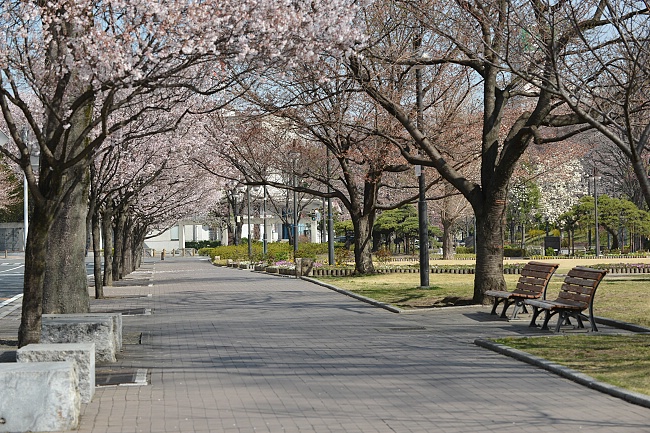
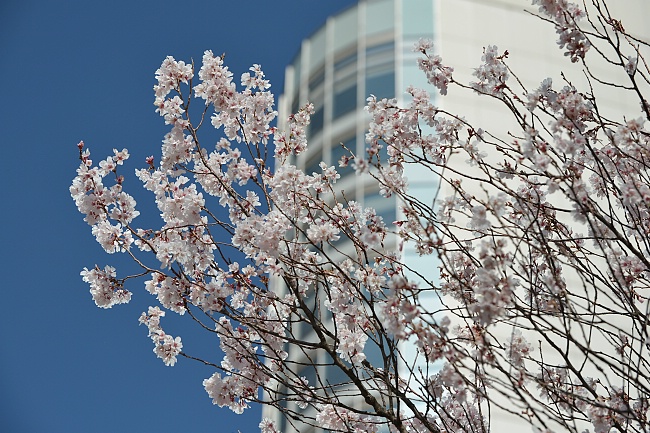
Maebashi Park
March 28, 2013 - opening (10-50%)
Next I headed over to Maebashi, the capital city of Gunma Prefecture. One of its nice cherry blossom spots is Maebashi Park, a large city park located between the Gunma Prefectural Capital Building and the Green Dome event center. The park is a pleasant 30 minute walk from Maebashi Station, but is also served by several bus lines that depart from the station (10 minutes, 190 yen, roughly 1-2 buses per hour).
About 200 cherry trees are planted around the park, especially along the canal that runs next to the main road though the grounds. Their blossoms were still opening today, but were looking very nice especially along the moat and along the stone wall that overlooks the rest of the park. There isn't a whole lot of space underneath the trees for hanami parties, but there were several food stands and some very nice looking outdoor restaurants set up to serve visitors instead.
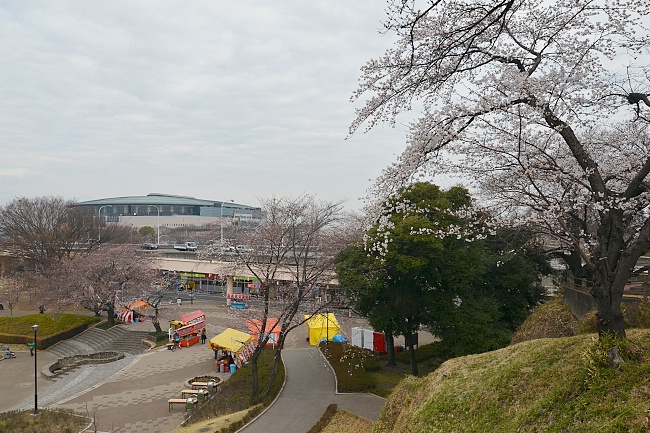
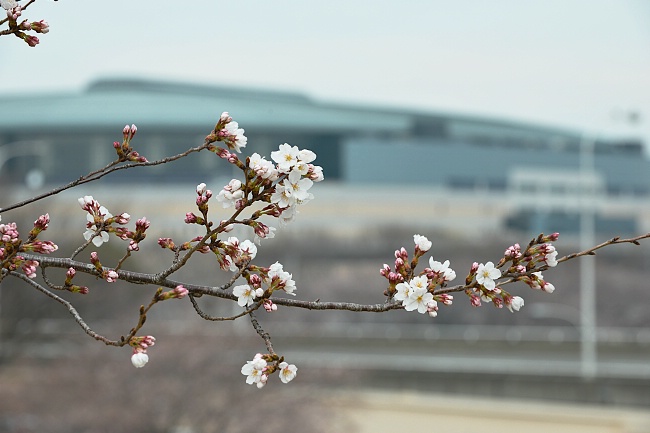
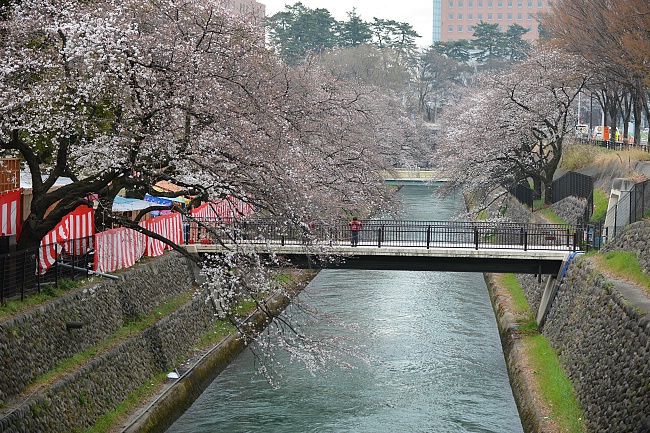
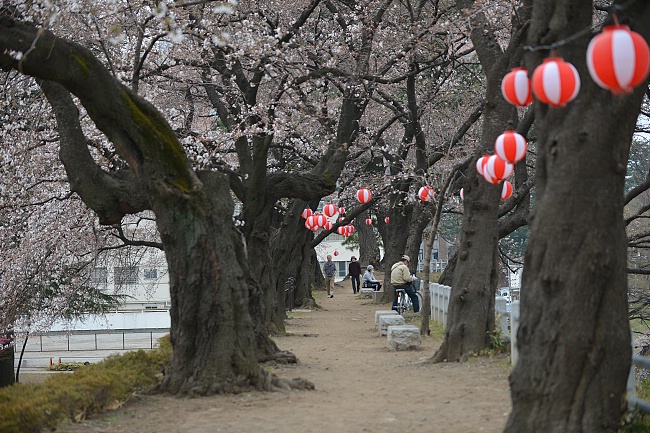
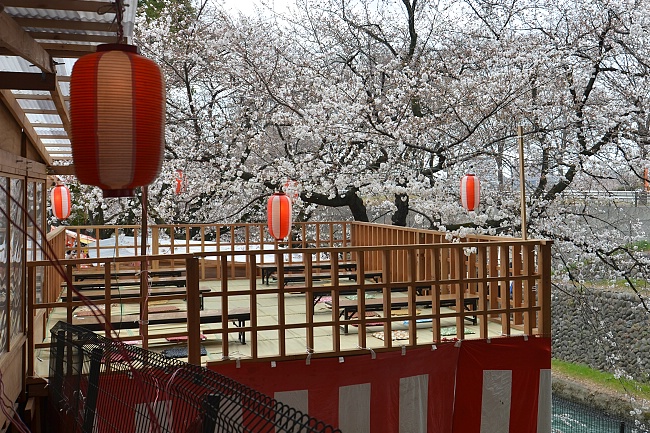
Shikishima Park
March 28, 2013 - opening (10-50%)
Just a few minutes down the road is Shikishima Park, another large public park that is home to many of the prefecture's top sports facilities including the home stadium of the Kusatsu Thespa professional soccer team.
About 300 cherry trees can be found around the park, and many of those are planted over lawns at the north end of the grounds. It is an ideal spot for hanami partying, and several groups were out today enjoying the nice weather. The trees around Shikishima Park were the most advanced of the day, yet were still less than 50% open. At this pace the cherry blossoms around the park could reach full bloom as early as Monday or Tuesday of next week.
Shikishima Park is accessible by bus from Maebashi Station (15 minutes, 240 yen, 1-2 departures per hour). Alternatively, the park is about a 10 minute, 1500 yen taxi ride from the station.
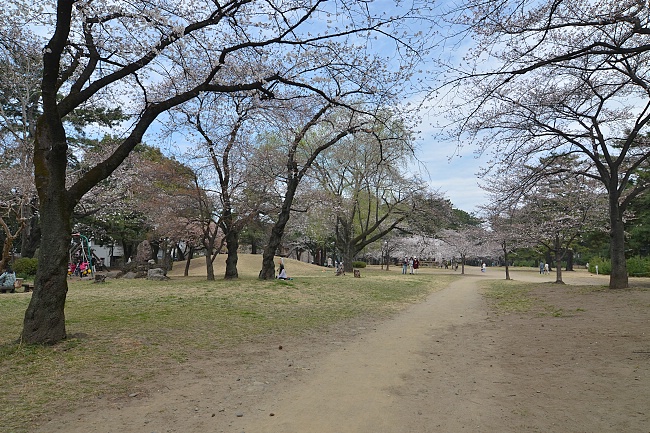
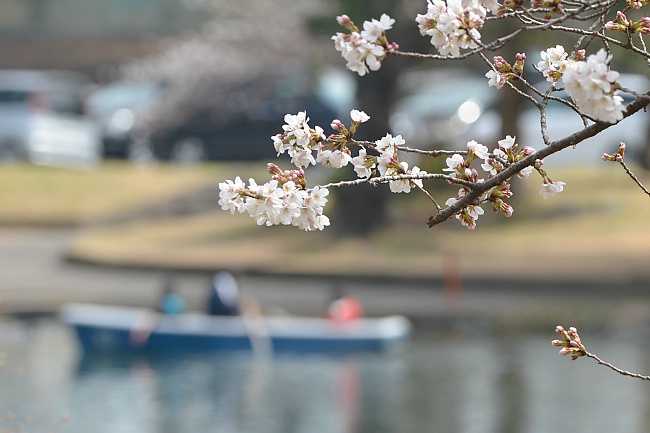
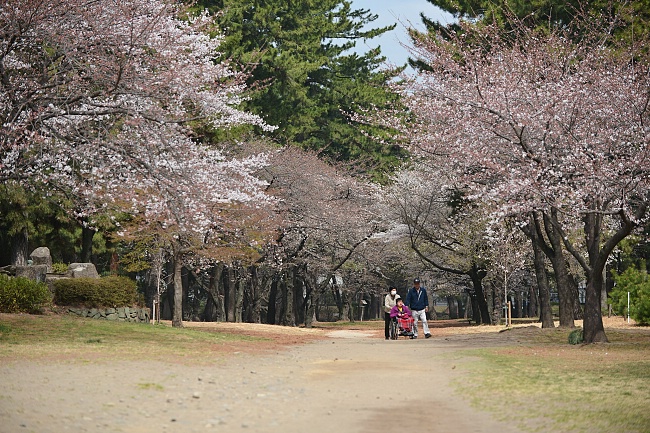
Akagi Senbonzakura
March 28, 2013 - about to open
My final stop today was the Akagi Senbonzakura, located about halfway up Mount Akagi to the north of Maebashi. The Senbonzakura features a two kilometer long road lined with over 1000 cherry trees that form a beautiful cherry blossom tunnel when in bloom. There are also several hundred trees planted around wide lawns and fields of Phlox Moss (Shibazakura). A sakura festival will be held at the Senbonzakura from April 6-21. During that time food stands will be set up, and the cherry trees will be illuminated until 21:30.
The park lies about 500 meters above sea level, and due to the elevation the cherry trees along the Senbonzakura are slightly behind the rest of the region and haven't begun to bloom yet. They looked very close to opening though, and will probably open early next week and reach full bloom around the second week of April.
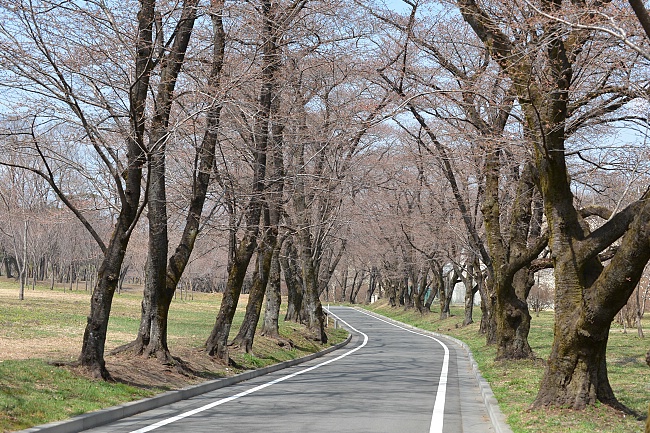
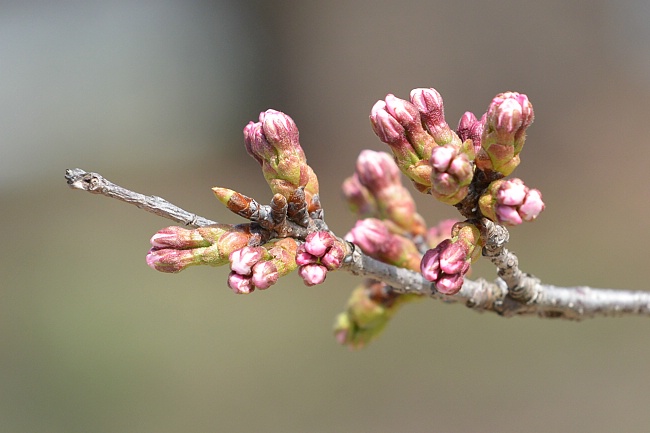
The Akagi Senbon is not the easiest place to access. The most convenient train stations are JR Maebashi Station and Tobu Akagi Station. Akagi Station can be reached by hourly, direct Tobu limited express trains from Asakusa Station in Tokyo (105 minutes, 2160 yen). Shuttle buses depart from Akagi Station and Maebashi Station to the Senbonzakura on weekends and holidays in April (except for the 6th and 7th). The buses take about 30 minutes and one hour respectively and cost 1000 yen for a one day pass good for unlimited rides.
Unfortunately, the only way to reach the park on all the other days is by taxi or rental car. Taxis cost about 6000 yen one way from JR Maebashi Station or 4000 yen one way from Tobu Akagi Station. A rental car is another option and starts at around 5000 yen for a half day rental.
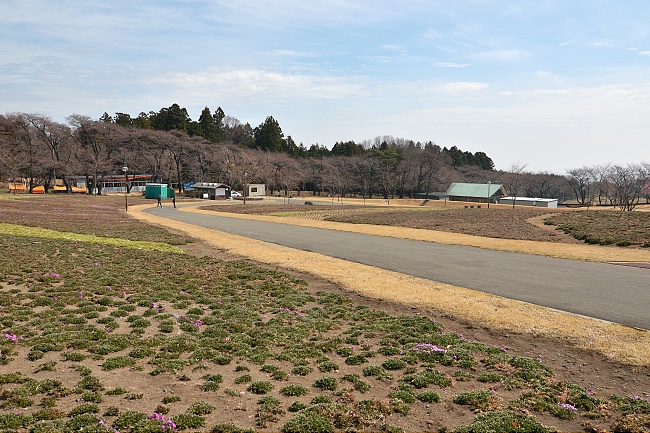
| previous post |
| next post |
Questions? Ask in our forum.